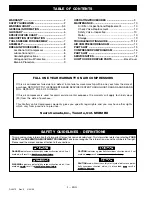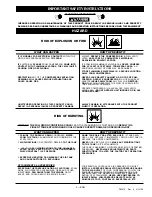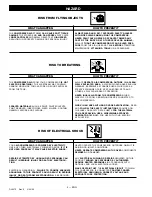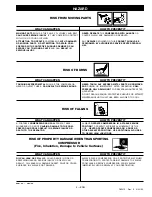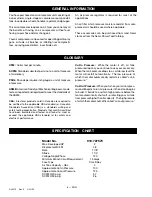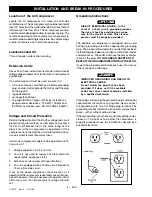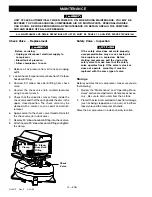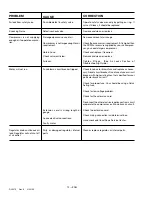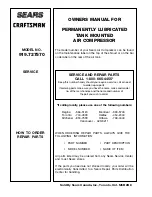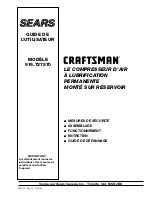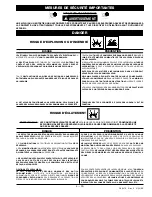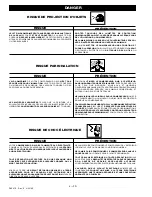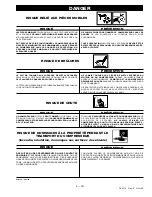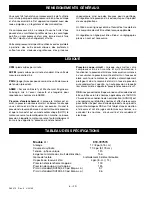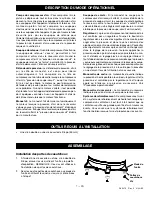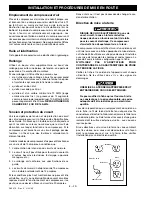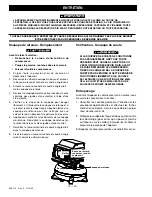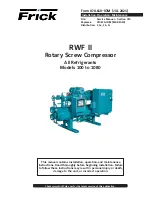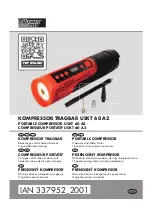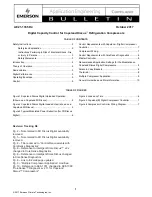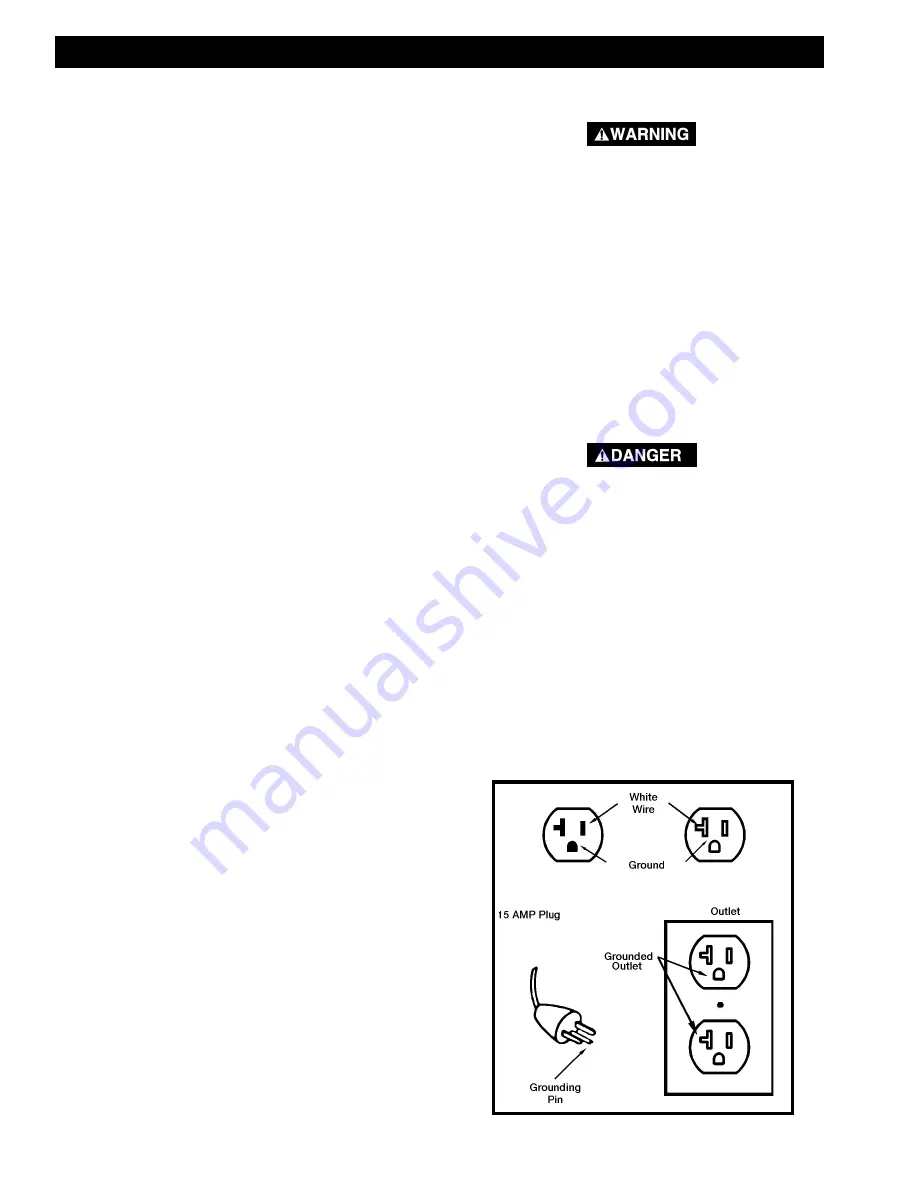
8 — ENG
D20419 Rev. 0 2/22/00
Grounding Instructions
RISK OF ELECTRICAL SHOCK. In the
event of a short circuit, grounding reduces
the risk of shock by providing an escape
wire for the electric current. This air com-
pressor must be properly grounded.
The portable air compressor is equipped with a cord
having a grounding wire with an appropriate grounding
plug. The plug must be used with an outlet that has been
installed and grounded in accordance with all local codes
and ordinances. The outlet must have the same configu-
ration as the plug.
DO NOT USE AN ADAPTER TO
DEFEAT THE GROUNDING FEATURE OF THE PLUG.
Inspect the plug and cord before each use. Do not use
if there are signs of damage.
IMPROPER GROUNDING CAN RESULT IN
ELECTRICAL SHOCK.
Do not modify the plug that has been
provided. If it does not fit the available
outlet, the correct outlet should be installed
by a qualified technician.
If repairing cord or plug, the grounding wire must be kept
separate from the current-carrying wires. Never connect
the grounding wire to a flat blade plug terminal. The
grounding wire has insulation with an outer surface that is
green - with or without yellow stripes.
If these grounding instructions are not completely under-
stood, or if in doubt as to whether the compressor is
properly grounded, have the installation checked by a
qualified electrician.
Location of the Air Compressor
Locate the air compressor in a clean, dry and well
ventilated area. The air compressor should be located at
least 12" away from the wall or other obstructions that will
interfere with the flow of air. The air compressor pump
and shroud are designed to allow for proper cooling. The
ventilation openings on the compressor are necessary to
maintain proper operating temperature. Do not place rags
or other containers on or near these openings.
Lubrication and Oil
This unit needs no lubrication or oiling.
Extension Cords
Use extra air hose instead of an extension cord to avoid
voltage drop and power loss to the motor, and to prevent
overheating.
If an extension cord must be used, be sure it is:
• a 3-wire extension cord that has a 3-blade grounding
plug, and a 3-slot receptacle that will accept the plug
on the product
• in good condition
• no longer than 50 feet
• 14 gauge (AWG) or larger. (Wire size increases as
gauge number decreases. 12 AWG, 10 AWG and
8 AWG may also be used. DO NOT USE 16 AWG.)
Voltage and Circuit Protection
Refer to the Specification Chart for the voltage and circuit
protection requirements of your compressor. Use only a
fuse or circuit breaker that is the same rating as the
branch circuit the air compressor is operated on. If the
compressor is connected to a circuit protected by fuses,
use only dual element time delay fuses.
Certain air compressor models can be operated on a 15
amp circuit if:
1.
Voltage supply to circuit is normal.
2.
Circuit is not used to supply any other electrical
needs (lights, appliances, etc.).
3.
Extension cords comply with specifications.
4.
Circuit is equipped with a 15 amp circuit breaker or
15 amp time delay fuse.
If any of the above conditions cannot be met, or if
operation of the compressor repeatedly causes interrup-
tion of the power, it may be necessary to operate it from
a 20 amp circuit. It is not necessary to change the cord
set.
INSTALLATION AND BREAK-IN PROCEDURES


